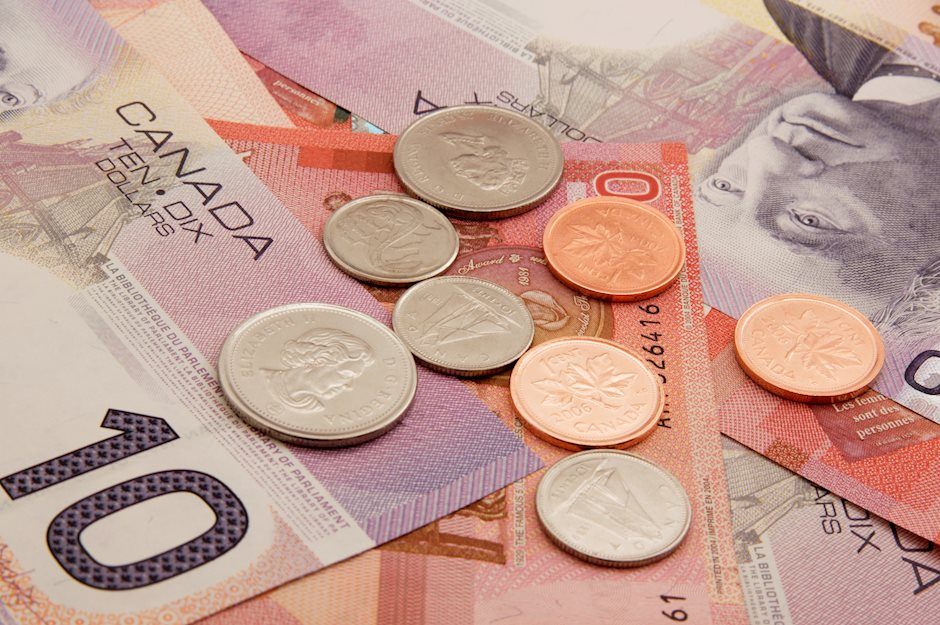USD/CAD recovers to near 1.4040 after weak Canadian GDP data
- USD/CAD bounces back from 1.3980 after the Canadian GDP data release, which was broadly weaker than expected.
- The Canadian economy grew by 0.1% in September, slower than estimates of 0.3%.
- A slight rebound in the US Dollar has also prompted the Loonie pair’s recovery.

The USD/CAD pair rebounds after posting a fresh three-day low near 1.3980 in Friday’s North American session. The Loonie pair bounces back as Statistics Canada has reported slower-than-expected Gross Domestic Product (GDP) growth in September month. The agency showed that the Canadian economy expanded by 0.1% after remaining flat in August. Economists expected the economy to have risen by 0.3%
The agency also reported that growth in the third quarter of the year was 0.3%, slower than 0.5% in the previous quarter. Meanwhile, in comparison to the third quarter of the previous year, the GDP growth was 1%, as expected, softer than the 2.2% growth in the second quarter of the current year.
Moderate expansion in the Canadian output is expected to boost expectations of more outsized interest rate cuts by the Bank of Canada (BoC). The BoC reduced its key borrowing rates by 50 bps in October.
Meanwhile, a slight recovery in the US Dollar (USD) has also pushed the Loonie pair higher. The USD recovered some of its intraday losses, suggesting that a near-term low has been formed. The US Dollar Index (DXY), which tracks the Greenback’s value against six major currencies, bounces back after registering a fresh two-week low near 105.60.
The correction in the US Dollar started when United States (US) President-elect Donald Trump nominated Scott Bessent to fill the position of Treasury Secretary. Market participants expect Bessent to execute Trump-stated trade policies strategically and gradually that won’t prompt inflationary pressures swiftly.
Canadian Dollar FAQs
The key factors driving the Canadian Dollar (CAD) are the level of interest rates set by the Bank of Canada (BoC), the price of Oil, Canada’s largest export, the health of its economy, inflation and the Trade Balance, which is the difference between the value of Canada’s exports versus its imports. Other factors include market sentiment – whether investors are taking on more risky assets (risk-on) or seeking safe-havens (risk-off) – with risk-on being CAD-positive. As its largest trading partner, the health of the US economy is also a key factor influencing the Canadian Dollar.
The Bank of Canada (BoC) has a significant influence on the Canadian Dollar by setting the level of interest rates that banks can lend to one another. This influences the level of interest rates for everyone. The main goal of the BoC is to maintain inflation at 1-3% by adjusting interest rates up or down. Relatively higher interest rates tend to be positive for the CAD. The Bank of Canada can also use quantitative easing and tightening to influence credit conditions, with the former CAD-negative and the latter CAD-positive.
The price of Oil is a key factor impacting the value of the Canadian Dollar. Petroleum is Canada’s biggest export, so Oil price tends to have an immediate impact on the CAD value. Generally, if Oil price rises CAD also goes up, as aggregate demand for the currency increases. The opposite is the case if the price of Oil falls. Higher Oil prices also tend to result in a greater likelihood of a positive Trade Balance, which is also supportive of the CAD.
While inflation had always traditionally been thought of as a negative factor for a currency since it lowers the value of money, the opposite has actually been the case in modern times with the relaxation of cross-border capital controls. Higher inflation tends to lead central banks to put up interest rates which attracts more capital inflows from global investors seeking a lucrative place to keep their money. This increases demand for the local currency, which in Canada’s case is the Canadian Dollar.
Macroeconomic data releases gauge the health of the economy and can have an impact on the Canadian Dollar. Indicators such as GDP, Manufacturing and Services PMIs, employment, and consumer sentiment surveys can all influence the direction of the CAD. A strong economy is good for the Canadian Dollar. Not only does it attract more foreign investment but it may encourage the Bank of Canada to put up interest rates, leading to a stronger currency. If economic data is weak, however, the CAD is likely to fall.
Author

Sagar Dua
FXStreet
Sagar Dua is associated with the financial markets from his college days. Along with pursuing post-graduation in Commerce in 2014, he started his markets training with chart analysis.

















